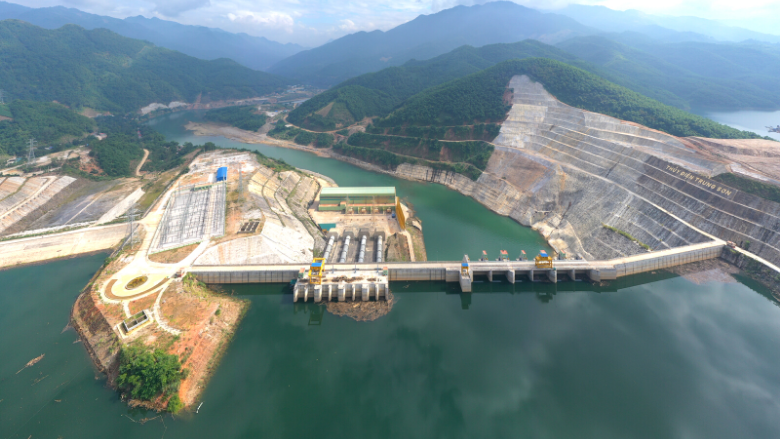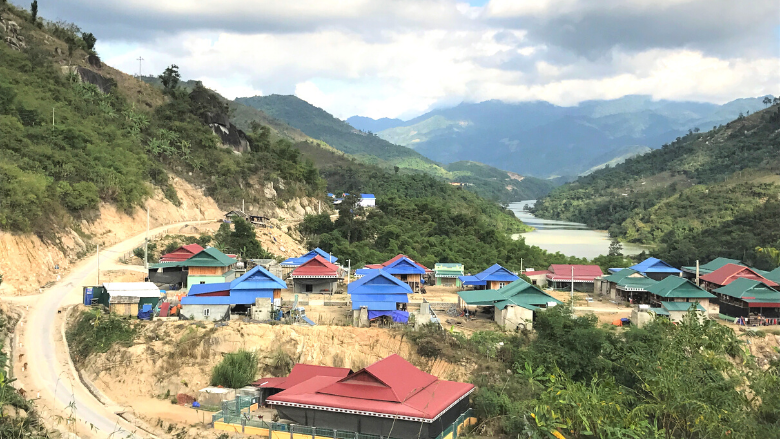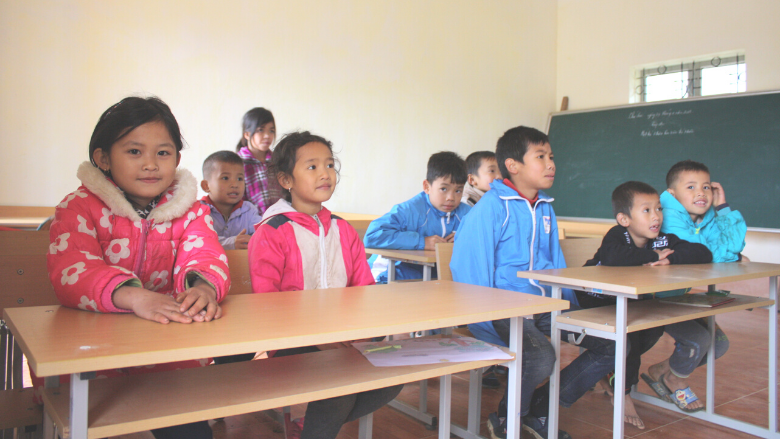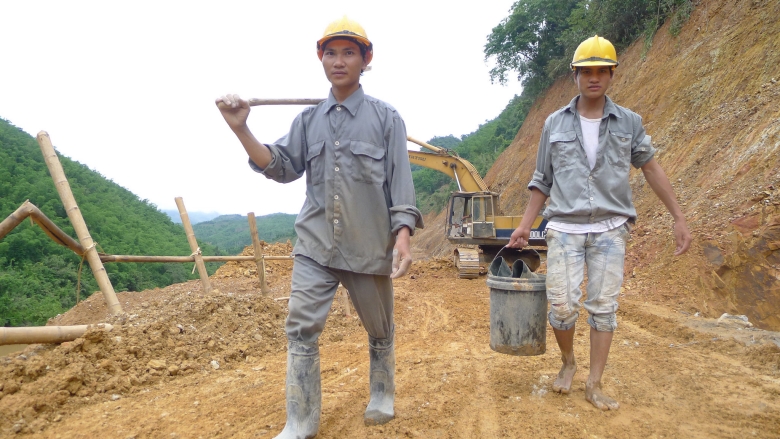Results
The project has achieved the following outcomes:
- The new 260-megawatt (MW) grid-connected hydropower plant became operational in 2017 and as of October 2019, it had supplied 2.5 billion kilowatt-hours (kWh) of electricity at an average net present cost lower than power generated by other renewable sources or by coal, at US¢4.0 per kWh compared to solar photovoltaic (PV) feed-in tariff (FIT) of US¢9.35 per kWh and wind FIT at US¢7.9–9.8 per kWh.
- The TSHPP reduced GHG emissions by approximately 1 million metric tons annually compared to a thermal plant supplying the same volume of electricity.
- The project increased local access to grid electricity in the affected areas from 30 percent in 2015 to 97 percent (about 800 households) in 2019.
- As a well-designed and dispatchable plant during peak hours, the TSHPP provided a sizeable and reliable capacity to meet the power demand and contributed to stable electricity output to the Vietnamese power system which reduced the frequent interruptions associated with supply demand imbalance thus improving the overall quality of electricity supplied to consumers.
- The plant’s reservoir dedicated a space that could store 112 million cubic meters of water for flood control. During the intensive three-day heavy rain event in August 2018, for example, the plant helped reduce the peak flood inflow by twenty percent.
- The agriculture-based livelihoods of approximately 10,600 people in over 3,400 households affected by the project were either restored or improved. They continued their main practice of growing rice, maize and cassava and expanded into animal husbandry. The majority of the affected people were from ethnic minorities and two-thirds of households in the project areas were considered poor.
- The project generated significant economic activity in the project-affected areas with the emergence of several small and medium-scale enterprises selling bamboo and agricultural products in the project area and along the newly built access roads. The percentage of local households engaged in small business and commerce increased from 10.3 percent to 24.6 percent between 2015 and 2019.
New houses in the resettlement area. Photo: Tran Hong Ky © The World Bank World Bank Group Contribution
The World Bank Group’s International Bank for Reconstruction and Development (IBRD) provided a US$330 million loan out of a total of US$411 million needed for the project. The Bank also provided extensive analytical and technical assistance throughout the project cycle.
Partners
In addition to the IBRD loan, the project received US$2 million from a grant by the Policy and Human Resources Development Fund to support project preparation.
Moving Forward
The transmission infrastructure of TSHPP has laid the foundation for the future development of small hydropower projects in the region. A new privately-owned hydropower plant has sed used TSHPP’s transmission lines to evacuate the energy it produces to the grid.
TSHPP was one of the first large hydropower projects in Vietnam to meet the international criteria as assessed by the International Hydropower Protocol. It has served as a best practice for hydropower development in Vietnam. Experiences in developing TSHPP, particularly the innovative and effective approaches in addressing environmental and social issues, are shared internationally and adopted by other large World Bank-financed hydropower projects, such as the Upper Arun Hydro Project in Nepal.
Local children in a classroom in the resettlement area. Photo: Erin Gamble © The World Bank Beneficiaries
“We are happy with the support we received to settle down in the relocation sites. We were able to raise chickens better due to the training we got. Before, chickens were easy to get sick and died fast. Now we know how [to] keep them healthy and take care of them when they get sick. Which medicine to take; how to use it… They taught us all. We even discussed among each other. In many cases, the sick birds will get better instead of dying. Wonderful!” (Female, Head of Chicken Raising Group, Lin Village, Trung Ly Commune).



